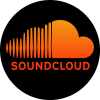




Tracker modules are great, and I've been listening to them in various forms practically forever. However, the issue is that all of the modules that are desirable are floating around various websites and not always in a ready-to-go format or collected in a single place. Even worse, there are some amazing underrated artists whose modules only exist on a single website or game (that doesn't have the contents extracted) and it's not easy to find these artists or their modules without knowing them to begin with!
I've spent probably 300 hours auditing modules to solve this problem. This was caused by:
Unfortunately the quality between .MODs and .S3M or .XM can vary (in terms of sample quality), but if that doesn't bother you I would suggest merging all four of the archives and then playing them in a randomized playlist.
The artists present in these archives (I finally went back to sift through them all and add them to this list along with the handles and any notes of exceptions, if there's any missing below then that would be due to the fact they never put their name in the module):
Keep in mind that some artists back then claimed others' tracks and rapidly changed handles (Ian Ford himself alone has had over six different handles); so if there's a duplicate track by some other artist of whom I haven't listed above, they most likely 'stole' it. Amiga Music Preservation is a good way to view this problem from back then. Another thing that was done were covers from other artists or well known songs (a good example are some of Sami Kinnunen's pieces that he retracked from other artists of whom people in 2023 now get confused and think he wrote them), or, there's been ancient confusion as to what was a handle vs. tracker title vs. a port/cover from another artist who was more obscure than the artist doing the port/cover. If you read the message/sample notes sometimes this is expounded or referenced by the artists themselves!
Some of my personal favourites and criminally underrated are: Hans van Vliet, Ian Ford, Jani Timoskainen, Hannu Salonen, Holger Stenzhorn, Liam J. Hesse, Staffan Melin ... no idea what some of them are up to these days. Hannu Salonen did give me a quick shout out when I had the Mummy Maze OST on YouTube eons ago, but no word back since.
I might possibly create a 'living archive' of some of the tracker text and dump all of the interesting ones to a single page. We'll see. There's a lot of funny things embedded in all of them, and sometimes even the note data itself streaming by.
The Amiga .MOD format originally played at 438 Hz due to limitations with the hardware curiously enough, something to do with processor cycles if I recall? This means that most of the time when you're listening to Amiga modules they're not actually running at a 440 Hz pitch which is a partial contributor to the 'Amiga sound'. FastTracker 2 on the other hand was written for MS-DOS PCs and runs the modules at 440 Hz, and also has some minor differences in the way the tracker data is processed.
What this means... is that not all .MODs are created equal. There are some .MODs in this archive which require the FastTracker 2 mode to be interpreted 'correctly', but this can also break non-FastTracker 2 modules, and vice versa!
The good news is, running all of the .MODs in either mode won't really cause that much of a difference except for probably around 30 ~ 40 modules? I've not spent the time to isolate the exact ones due to the sheer size of this, but if it really bothers someone that much (to which most people aren't even AWARE of this anyways) they can go ahead and do the full audit themselves in both modes. Personally, most of the time I listen to modules in the 'FT2' mode, but modules requiring the original Amiga parmeters will sound very strange.
The best demonstration of 'extremes' with the two .MOD interpretations are Jani (C-Quence) Timoskainen's modules which are in fact meant for FastTracker 2 and become distorted very quickly with standard Amiga parameters. I would suggest using balance.MOD and going between the different modes to really hear the difference. If you're using XMPlay you'll need to restart the module each time else weird things happen if you change interpretation modes in real time and don't reset it. I've no idea if Audacious supports the different modes -- I know Stian Sebastian Skjelstad's UNIX port of the Open Cubic Player supports all of the modes and even special flags.
Copyright ©